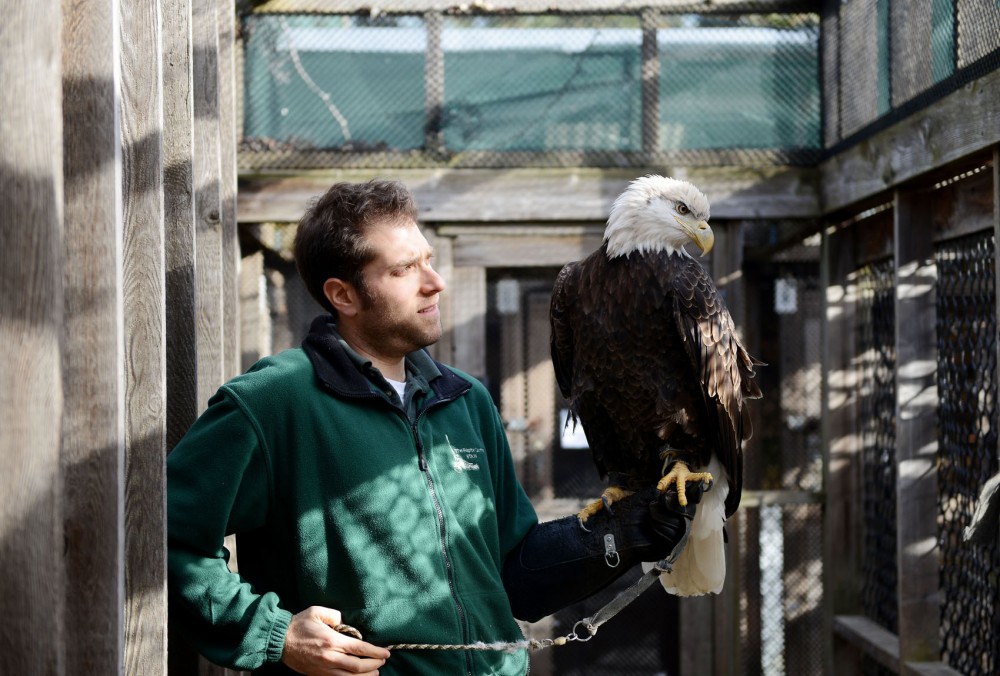The University of Minnesota’s Raptor Center is a destination for visitors from around the state, but that wasn’t always the case.
When its current facility was built in 1988, leaders didn’t plan for the nearly 20,000 visitors it now receives each year. Some facilities are becoming run-down, creating accessibility issues for guests.
To accommodate the influx of visitors, the center is set to undergo renovations this spring to fix aging facilities and boost educational capabilities.
Raptor Center Executive Director Julia Ponder said the project is in its design phase and the total cost isn’t finalized yet. The center hopes to raise $2 million to pay for renovations, she said, and has received about $1.6 million in private donations so far.
The University established the Raptor Center in 1974 as part of the College of Veterinary Medicine. Its employees care for more than 700 sick and injured raptors annually, including hawks, falcons, bald eagles and owls.
Since its beginning, co-founder and Director Emeritus Patrick Redig said, the center and its programming have grown to further emphasize education and community outreach efforts.
“As time has gone on, we’ve reconfigured the program, because we do a lot of on-site programs now, and we’ve become more of a destination,” he said.
Visitors like to see the birds, Redig said, so employees give visitors tours of a public facility. But part of the building sits on a hill, which creates accessibility challenges. Though there are stairs, he said, it can still be difficult to get around.
“In the winter, with snow and ice accumulations, it goes from difficult to dangerous,” he said.
Redig said renovation plans include building up the hill so the structure is all on one level, eliminating the stairs.
The renovation will also remove old, wooden facilities and rebuild them using contemporary materials, Ponder said.
“We’re removing decrepit, wooden bird housing, and we’re going to replace it with a permanent structure that is more of an educational facility,” she said.
To improve educational capabilities, renovation plans include a gathering area and educational displays.
The University of Iowa’s Macbride Raptor Project also has a raptor rehabilitation facility. Like the center in Minnesota, it focuses on community education, rehabilitation of wild raptors and research.
Project Coordinator Jodeane Cancilla said the university’s facilities are in good condition.
As raptors’ natural habitats are destroyed, she said, making raptor rehabilitation and educational facilities is more important than ever.
At the University’s Raptor Center, officials hope to continue helping the raptor population through veterinary care and teaching the public about these at-risk birds.
“We have been active in the restoration of endangered species,” Ponder said, “and we continue to research and then educate people about ways that human impacts are challenging raptor populations.”


